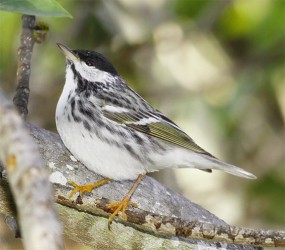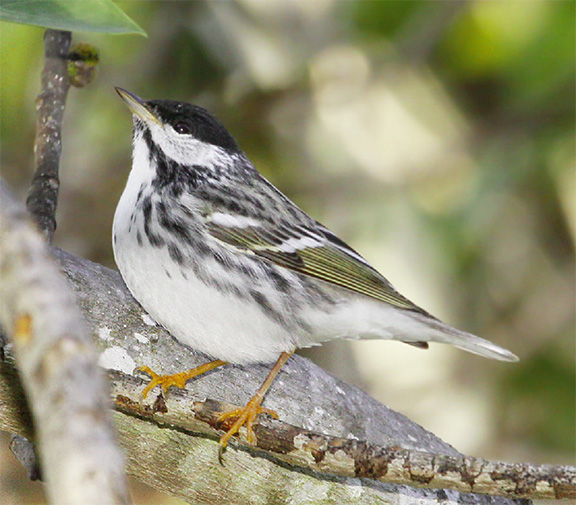WASHINGTON, (Reuters) – The blackpoll warbler accomplishes a mighty big feat for a such a little bird.
 Scientists on Tuesday documented how this songbird that weighs half an ounce (12 grams) completes an arduous nonstop flight over the Atlantic Ocean from forests in New England and eastern Canada to Caribbean islands as it migrates each fall toward its South American wintering grounds.
Scientists on Tuesday documented how this songbird that weighs half an ounce (12 grams) completes an arduous nonstop flight over the Atlantic Ocean from forests in New England and eastern Canada to Caribbean islands as it migrates each fall toward its South American wintering grounds.
By placing miniature backpacks with geolocators on the birds, the researchers determined they flew an average of nearly 1,600 miles (2,540 km) over two to three days.
“No other bird this size migrates for this long in one go. It is truly one of the most amazing migratory feats ever recorded,” said ecologist Ryan Norris of the University of Guelph in Ontario, describing “a fly-or-die journey.”
They landed in Puerto Rico and Hispaniola, resting for a couple of days to a couple of weeks before flying to Colombia and Venezuela. University of Massachusetts ecologist Bill DeLuca described the migration as “on the brink of impossibility.”
The spring return flight follows a predominantly overland route through Florida and up the U.S. East Coast.
The research resolves a half-century mystery about blackpoll warbler migration. There had been indirect evidence they were performing this transoceanic migration – for example, blackpolls landing on ships in the Atlantic under bad weather conditions.
But could they really complete such a journey considering a water landing would kill them?
“Some doubted that such a herculean flight would be physiologically and physically possible for a songbird weighing one-half ounce,” said Vermont Center for Ecostudies ornithologist Chris Rimmer.
Ocean birds including albatrosses and gulls make transoceanic flights, and tiny ruby-throated hummingbirds cross the Gulf of Mexico, although that is not as far. Most migratory songbirds that spend winters in South America fly a safer overland route through Mexico and Central America.
Blackpolls, with 8-inch (20 cm) wingspans, have distinctive yellow legs and are speckled with black, white and gray feathers with two white wing stripes, a white chin and cheeks, and a black “cap” atop the head.
Before migrating, they gorge themselves to build strength and shrink many of their digestive organs to minimize any part of the anatomy not needed during an extended flight.
“They nearly double their body mass in fat reserves and absorb many non-essential organs during migration to become lean, mean flying machines, with a little help from southerly trade winds,” DeLuca said.
+The research appears in the journal Biology Letters.

